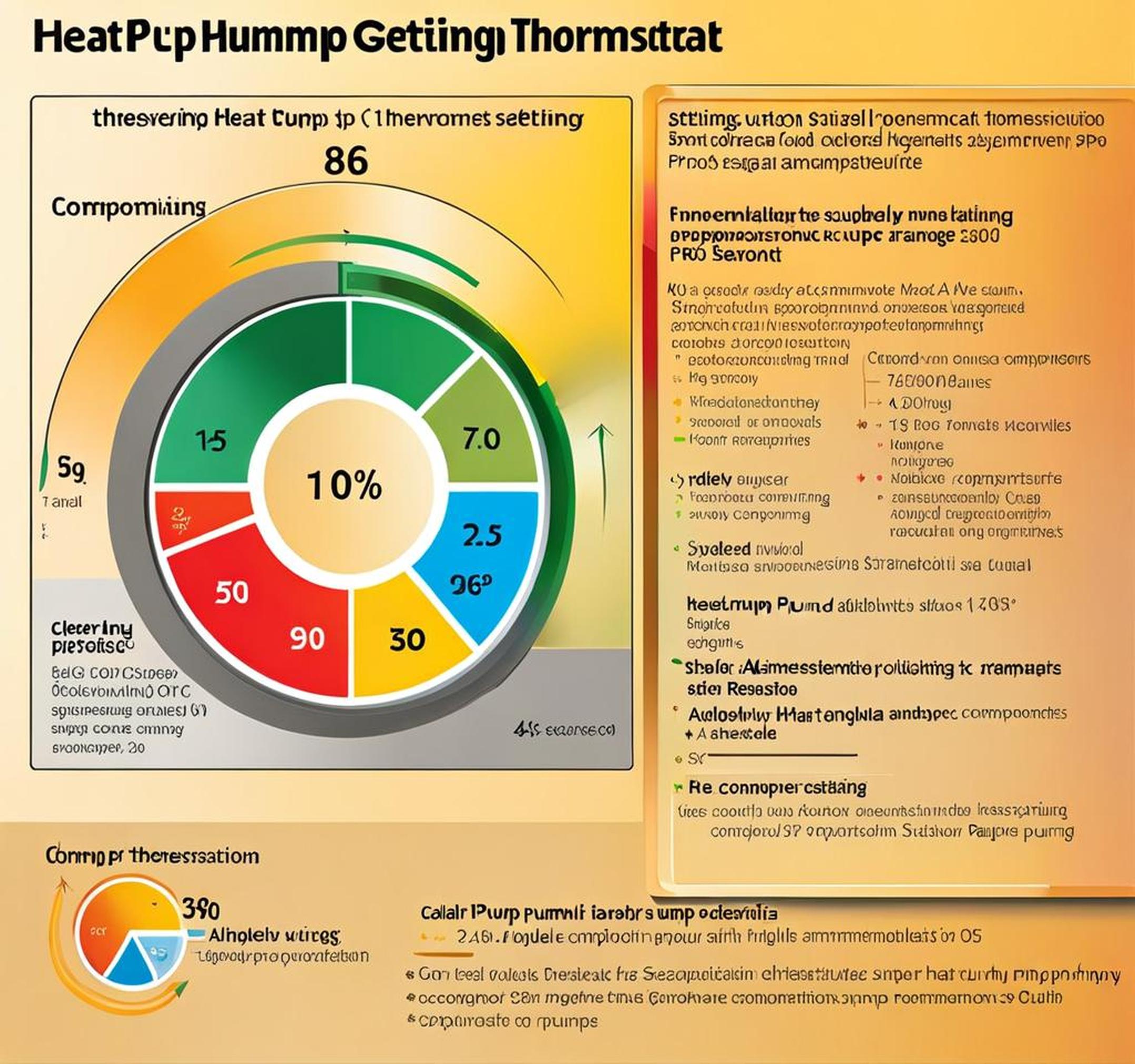When it comes to saving money on home heating and cooling costs, properly configuring your heat pump thermostat is crucial. Heat pumps provide both warming and cooling by transferring heat between indoor and outdoor air. Optimizing the temperature settings allows your system to operate efficiently all year long without overworking itself.
In this post, we’ll explore the key factors in programming your thermostat for ideal heat pump performance during heating mode, cooling mode, and transitional temperatures. Follow these all-seasons tips and you’ll stay cozy while keeping energy bills in check.
Choosing the Right Thermostat
The first step is selecting a compatible thermostat designed to maximize your specific heat pump HVAC system. While a basic programmable thermostat may suffice, advanced smart options provide additional energy-saving and convenience capabilities through remote access, automation, and data collection.

| Thermostat Type | Key Features |
| Basic Programmable | Schedule temperature changes, set eco modes |
| Smart (Wi-Fi Enabled) | Control remotely via app, programming based on habits and preferences, integrate with other smart devices |
Consult with a qualified technician on selecting a model with functionality aligned to your priorities like budget, efficiency goals, and convenience. They can ensure optimal integration and functionality with your existing HVAC infrastructure.
Leverage Smart Thermostat Capabilities
Once installed, take time to configure more advanced smart thermostat features designed to save energy and maximize comfort convenience:
- Geofencing: The system automatically adjusts the temperature when you enter or exit a geo-fenced area near your home based on the location of your smartphone.
- Occupancy detection: Motion sensors detect when the home is occupied or empty and adjust heating or cooling accordingly.
- Monitoring and reporting: View run times, energy usage data, and trends to inform further optimization.
Setting Temperatures for Heating Mode
To ready your home for cooler weather, update the thermostat with appropriate heating mode presets…
Target Ideal Balance of Warmth and Savings
Set the thermostat to around 68degF (20degC) during occupied hours for ideal heat pump efficiency and comfort during winter. Lower overnight and away presets slightly, allowing about 2degF Celsius variance for energy savings that won’t be notably uncomfortable.
Smart thermostats will learn and automatically program optimal temperature fluctuations for your schedule and preferences to keep you cozy when home while conserving when possible.
Minimize Reliance on Auxiliary Heating
Heat pumps become less efficient below 35degF outdoors. At this point, supplementary heating components like electric coils kick in, increasing costs. Newer models utilize multi-stage compressors and variable output to optimize heat production across a broader outdoor temperature range before involving wasteful auxiliary heat.
Configure your system properly to maximize the heat pump’s coverage capabilities based on your climate. Work with an HVAC specialist set up appropriate balance points for switching between the heat pump and secondary heat sources.
Settings for Cooling Mode
In summer’s warmer weather adopt thermostat programming focused on keeping indoor temps sufficiently cool without significantly overcooling as energy waste can occur…
Set Temperature Between 75-80degF (24-27degC)
Target 78degF during occupied hours for ideal cooling without excessive runtime. As seasons transition, incrementally adjust the thermostat to prevent the unit from cycling on and off unnecessarily.
Using a programmable or smart thermostat allows you to fine-tune cooling cycles around your living patterns. Geofencing features ensure unoccupied times don’t trigger unnecessary cooling demands. Gradually raise temps 8-10degF when the home is empty to generate savings without making it uncomfortable upon return.
